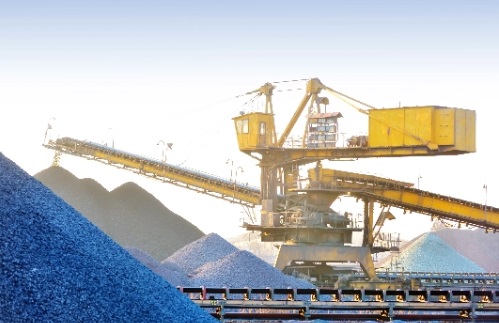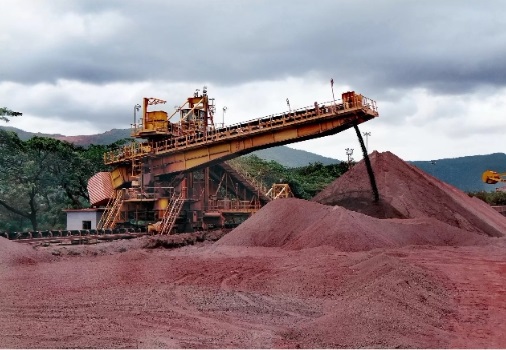2025
Enhancing Material Handling Efficiency with Cantilever Stackers
27 Jun.2024
In the world of material handling, efficiency is key. The ability to move and store materials quickly and safely can greatly impact the productivity and profitability of any operation. One tool that has proven to be highly effective in enhancing material handling efficiency is the cantilever stacker. In this article, we will explore the various aspects of cantilever stackers, including their types, advantages, applications, and key considerations for implementation.
Understanding Cantilever Stackers
Cantilever stackers are versatile machines designed to lift, transport, and stack materials in a wide range of industrial settings. They are commonly used in warehouses, manufacturing facilities, distribution centers, and other environments where efficient material handling is crucial. Cantilever stackers are equipped with a cantilevered mast, which allows for easy access to loads and enables operators to maneuver in tight spaces.

Types of Cantilever Stackers
There are several types of cantilever stackers available, each designed to meet specific material handling needs. The most common types include:
Manual Cantilever Stackers: These stackers are manually operated and require physical effort from the operator to lift and transport loads. They are an economical option for small-scale operations with lighter loads.
Electric Cantilever Stackers: Electric stackers are powered by electricity and offer a more efficient and effortless operation. They are ideal for medium to heavy-duty applications and can handle larger loads with ease.
Counterbalance Cantilever Stackers: Counterbalance stackers are designed to counterbalance the weight of the load, allowing for stable lifting and stacking. They are commonly used in applications where the load needs to be lifted and transported without the need for additional support.
Advantages of Cantilever Stackers in Material Handling
Cantilever stackers offer numerous advantages that make them a popular choice for enhancing material handling efficiency. Some of the key advantages include:
Versatility: Cantilever stackers can handle a wide range of materials, including pallets, drums, boxes, and other bulky items. Their adaptability makes them suitable for various industries and applications.
Space Efficiency: The cantilevered mast design of these stackers allows for easy maneuverability in tight spaces. They can navigate narrow aisles and confined areas, maximizing the use of available space.
Increased Productivity: Cantilever stackers enable operators to lift, transport, and stack materials quickly and efficiently. This results in improved productivity and reduced downtime, ultimately leading to cost savings.
Operator Safety: Cantilever stackers are designed with safety features such as load backrests, safety brakes, and ergonomic controls. These features help prevent accidents and injuries, ensuring the well-being of operators.

Applications of Cantilever Stackers
Cantilever stackers find applications in a wide range of industries and material handling scenarios. Some of the common applications include:
Warehousing: Cantilever stackers are widely used in warehouses for stacking and retrieving pallets, loading and unloading trucks, and organizing inventory.
Manufacturing: In manufacturing facilities, cantilever stackers are used to transport raw materials, move finished products, and assist in assembly line operations.
Distribution Centers: Cantilever stackers play a crucial role in distribution centers by efficiently handling incoming and outgoing shipments, optimizing storage space, and facilitating order fulfillment.
Retail: Retail stores often use cantilever stackers for stocking shelves, organizing merchandise, and handling bulk items.
Key Considerations for Implementing Cantilever Stackers
Before implementing cantilever stackers in a material handling operation, there are several key considerations to keep in mind:
Load Capacity: It is essential to determine the maximum load capacity required for the intended application. Choosing a stacker with the appropriate load capacity ensures safe and efficient material handling.
Lift Height: Consider the maximum lift height needed to stack materials. Different stackers have varying lift heights, so selecting the right one is crucial to meet the operational requirements.
Power Source: Decide whether a manual or electric cantilever stacker is more suitable for the operation. Electric stackers offer greater efficiency and ease of use but require a power source.
Maintenance and Service: Regular maintenance and servicing are essential to keep cantilever stackers in optimal working condition. Consider the availability of spare parts and service support when selecting a stacker.

Conclusion
Cantilever stackers are a valuable tool for enhancing material handling efficiency in various industries. Their versatility, space efficiency, increased productivity, and operator safety features make them an ideal choice for many applications. By considering factors such as load capacity, lift height, power source, and maintenance requirements, businesses can successfully implement cantilever stackers and reap the benefits of improved material handling efficiency.
Related News:
A Comprehensive Guide to Operating and Maintaining a Cantilever Stacker
The Advantages of Using a Cantilever Stacker in Bulk Material Handling








